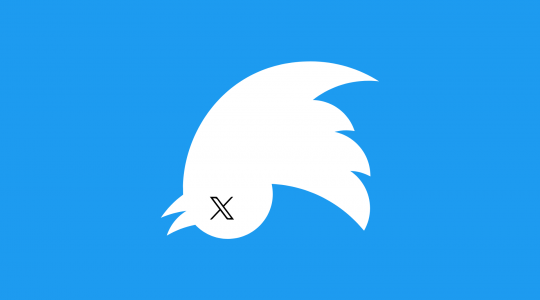Twitter X: Social media’s biggest rebrand
It can be difficult to know where to begin with Twitter’s rebrand to X, a decision that sent ripples across the digital landscape and one where we’re still seeing implications unfold in real time.
In this article, we cut through the noise and attempt to delve into the rationale behind the redirection of such an established platform, look into new competitors such as Threads, and find out what this means for businesses, marketers, and general users of X.
Lessons and controversies
Before we jump into the impact of Twitters rebrand to X, it’s important to iterate just how iconic Twitter was as a brand. Since launching in 2006, the platform grew to over 350 million users at its peak and became so culturally profound that to ‘tweet’ is now officially recognised as a verb in the dictionary.
This context is important when it comes to understanding why the transition from the iconic blue Twitter bird to the bold new X has caused such a stir.
The name change is the latest in a string of developments, including structural changes, mass layoffs and adjustments to the ways the platform sources revenue since Elon Musk acquired the company in October 2022.
Musk shared his thoughts on the rebrand in a ‘tweet’ below:

This tweet hints at Elon’s larger vision of the platform, which hopes to become an ‘all in one’ app that functions in a similar way to China’s ‘WeChat’ and can be seen by X’s long list of changes here.
But not everyone is impressed by the barrage of changes brought in over the last year, particularly the ‘rate limits’ which imposed a cap on the infinite scroll feature of X for all users who don’t pay $8 a month for a premium Twitter ‘blue’ account.
Threads, a serious contender?
All this came just four days before the launch of Threads, a social media platform created by Meta which shares similarities such as structure, layout, and character limit (albeit at 500 characters, just under double that of Twitter).
This timing was critical to the success of Threads, seeing the platform grow to 100 million users within a month – ironically, the exact same figure Forbes magazine quote as leaving the platform over the course of 2023!
Implications for advertisers
So, what does this mean for businesses using X as a key part of their marketing strategy?
For advertisers who’ve long relied on Twitter for effective paid advertising, the rebranding to X raises concerns. The changes to the platform’s interface and user experience highlight the alterations to ad labels, making them less noticeable as adverts and closer in appearance to organic posts.
This change solicited several negative responses from users, with concerns the tweaks could impact user trust and transparency, requiring advertisers to adapt their strategies to maintain their audience’s confidence.
This is part of a larger string of changes to ads, with Musk stating:
“Many accounts on this platform can earn thousands of dollars per month in advertising revenue sharing if they become verified subscribers!” and “you can become a verified subscriber for just $7/month in only a couple minutes.” He also ‘tweeted’ – “You’ll soon also be paid for ads appearing when others view your profile page, approximately doubling payouts.”
Just how this will perform, and function is yet to be seen.
Adapting to the change
To summarise, the rebranding of Twitter to X signals the latest in a series of developments for the brand, which increasingly carry weighty implications for users, marketers, and advertisers alike.
The transition from Twitter to X signals a jump away from the old and attempts to provide a fresh, new identity to the platform as it continues to undergo its transformation. The extent of user acceptance remains to be seen however, particularly with the introduction of Threads, which adds a layer complexity to the conversation.
By weighing the pros and cons and aligning their choices with brand identity and marketing goals, businesses can confidently navigate these ongoing changes and adapt early to maximise their results on both new and developing platforms.
Working with Blume
Blume is committed to helping businesses plan for the latest challenges around digital marketing and technology. With a rigorous approach to discovery and planning, we monitor trends closely that impact businesses, to elicit key information our partners need to drive growth, innovation, and profitability. We create a path for businesses in regulated consumer services sectors to achieve success and keep their enterprises and customers safe and informed.




